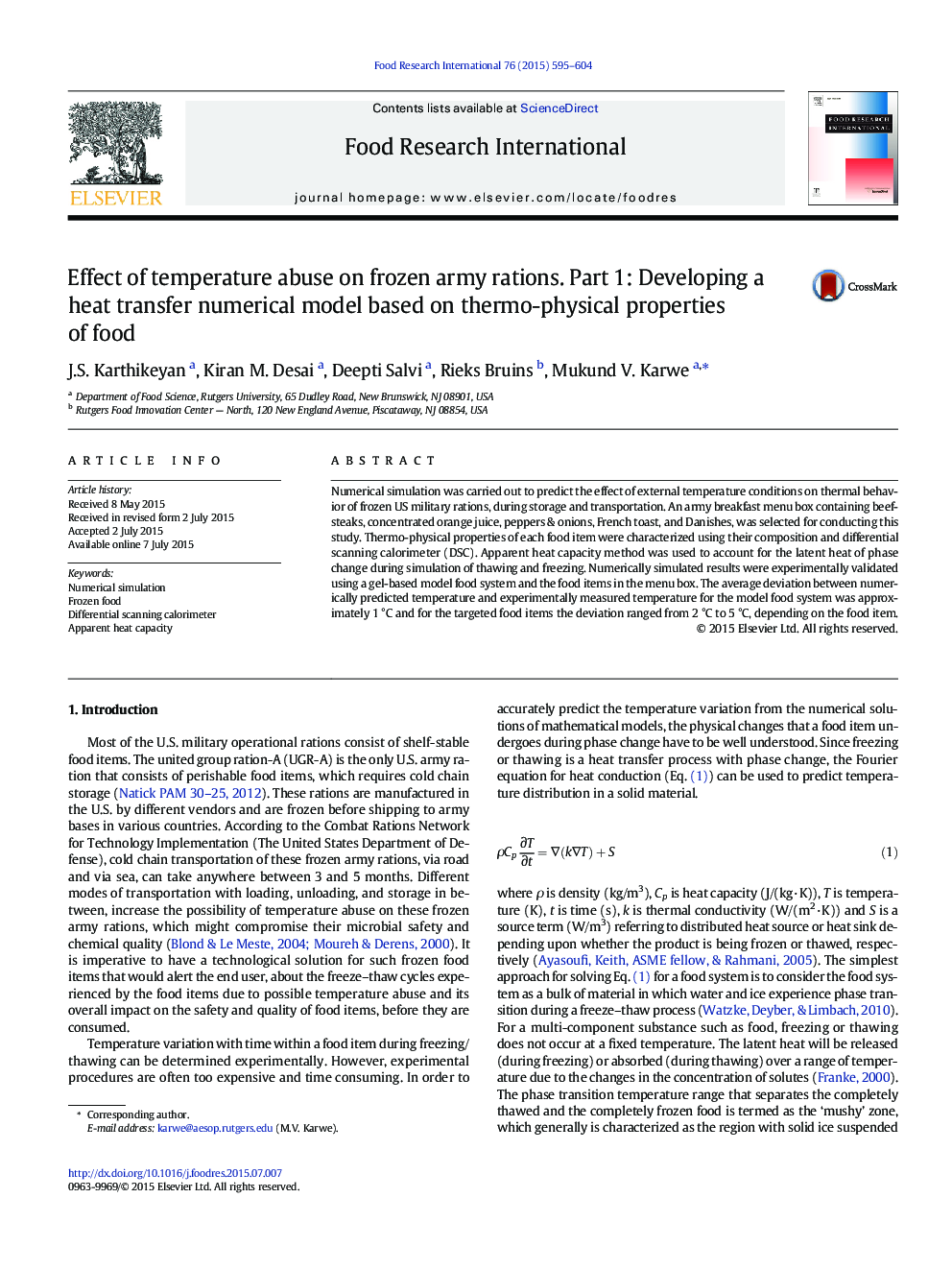| Article ID | Journal | Published Year | Pages | File Type |
|---|---|---|---|---|
| 6395193 | Food Research International | 2015 | 10 Pages |
â¢Heat transfer in frozen army rations was numerically simulated.â¢Thermo-physical properties of food items were obtained from component data and DSC.â¢Numerical prediction was experimentally validated with model and real food systems.â¢Results showed that, the numerical method can efficiently predict real time scenarios.
Numerical simulation was carried out to predict the effect of external temperature conditions on thermal behavior of frozen US military rations, during storage and transportation. An army breakfast menu box containing beefsteaks, concentrated orange juice, peppers & onions, French toast, and Danishes, was selected for conducting this study. Thermo-physical properties of each food item were characterized using their composition and differential scanning calorimeter (DSC). Apparent heat capacity method was used to account for the latent heat of phase change during simulation of thawing and freezing. Numerically simulated results were experimentally validated using a gel-based model food system and the food items in the menu box. The average deviation between numerically predicted temperature and experimentally measured temperature for the model food system was approximately 1 °C and for the targeted food items the deviation ranged from 2 °C to 5 °C, depending on the food item.
